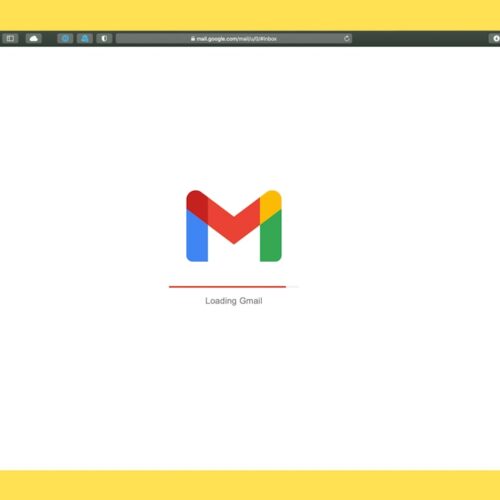Email marketing has become an essential tool for ecommerce businesses looking to boost their sales and engage with their customers. With the rise of social media and other digital marketing channels, some may question the relevance of email marketing. However, studies have consistently shown that email remains one of the most effective ways to reach and convert customers.
One of the key benefits of email marketing is its ability to directly target and engage with a specific audience. Unlike social media, where your message can easily get lost in a sea of content, email allows you to deliver personalized messages directly to your customers’ inboxes. This level of personalization can significantly increase the chances of conversion and drive sales for your ecommerce business.
Key Takeaways
- Email marketing is crucial for boosting ecommerce sales.
- Understanding your target audience is key to effective email marketing.
- Compelling email content and eye-catching templates can drive sales.
- Personalization and segmentation can improve engagement and conversion rates.
- Automated campaigns, optimized timing and frequency, and analytics can all improve email marketing performance.
Understanding Your Target Audience for Effective Email Marketing
To effectively use email marketing for your ecommerce business, it is crucial to understand your target audience. Knowing who your customers are, what they want, and how they behave will allow you to create more targeted and relevant email campaigns.
Start by analyzing your existing customer data. Look for patterns and trends that can help you identify common characteristics among your customers. This could include demographics such as age, gender, location, or psychographics such as interests and preferences.
Additionally, consider conducting surveys or interviews with your customers to gather more insights about their needs and preferences. This qualitative data can provide valuable information that will help you tailor your email campaigns to resonate with your audience.
Creating Compelling Email Content to Drive Sales
Once you have a clear understanding of your target audience, it’s time to create compelling email content that will drive sales. Your emails should be informative, engaging, and persuasive.
Start by crafting attention-grabbing subject lines that will entice recipients to open your emails. Use personalization techniques such as including the recipient’s name or referencing their past purchases to make the email feel more personalized.
In the body of the email, focus on providing value to your customers. This could be in the form of exclusive discounts, helpful tips and advice, or relevant product recommendations. Use persuasive language and compelling visuals to capture your audience’s attention and encourage them to take action.
Designing Eye-Catching Email Templates for Maximum Impact
The design of your email templates plays a crucial role in the success of your email marketing campaigns. A well-designed email template can grab your audience’s attention and make your message more memorable.
When designing your email templates, keep in mind the importance of mobile optimization. With the majority of emails being opened on mobile devices, it is essential to ensure that your emails are responsive and easy to read on smaller screens.
Use eye-catching visuals such as high-quality product images or engaging graphics to make your emails visually appealing. Incorporate your brand’s colors and fonts to create a cohesive and recognizable look.
Additionally, make sure that your email templates are clean and clutter-free. Avoid overcrowding the email with too much text or too many images. Keep the layout simple and easy to navigate, with clear call-to-action buttons that stand out.
Personalizing Your Emails for Better Engagement and Conversion Rates
Personalization is a key factor in driving engagement and conversion rates in email marketing. By tailoring your emails to individual recipients based on their preferences and behaviors, you can create a more personalized and relevant experience for your customers.
Start by using the recipient’s name in the email greeting and throughout the email whenever possible. This simple personalization technique can make the email feel more personalized and increase engagement.
Use customer data to personalize the content of your emails. For example, if a customer has recently purchased a specific product, you can send them follow-up emails with related product recommendations or exclusive discounts on similar items.
Segmentation is another powerful tool for personalizing your emails. By dividing your email list into smaller segments based on specific criteria such as demographics, purchase history, or engagement level, you can send more targeted and relevant emails to each segment.
Using Segmentation to Target Specific Customer Groups

Segmentation is a crucial strategy in email marketing that allows you to target specific customer groups with tailored messages. By dividing your email list into smaller segments based on specific criteria, you can deliver more relevant and personalized emails to each segment.
Start by identifying the different criteria you can use to segment your email list. This could include demographics such as age, gender, or location, as well as behavioral data such as purchase history or engagement level.
Once you have identified your segments, create targeted email campaigns for each segment. For example, if you have a segment of customers who have not made a purchase in the past six months, you can send them a re-engagement campaign with exclusive discounts or incentives to encourage them to make a purchase.
Segmentation allows you to deliver more targeted and relevant content to your customers, increasing the chances of engagement and conversion.
Implementing Automated Email Campaigns for Increased Efficiency
Automated email campaigns are a powerful tool for increasing efficiency and driving sales in email marketing. By setting up automated workflows, you can deliver timely and relevant emails to your customers without the need for manual intervention.
One of the most common automated email campaigns is the welcome series. When a new customer signs up for your email list or makes their first purchase, you can set up a series of automated emails that introduce them to your brand, provide helpful information, and offer exclusive discounts.
Abandoned cart emails are another popular automated campaign. When a customer adds items to their cart but does not complete the purchase, you can send them a series of reminder emails with incentives to encourage them to complete their purchase.
By automating these campaigns, you can save time and resources while still delivering personalized and timely emails to your customers.
Optimizing Your Email Timing and Frequency for Better Results
The timing and frequency of your emails can have a significant impact on their effectiveness. Sending emails at the right time and in the right frequency can increase engagement and conversion rates.
Start by analyzing your email analytics to identify the best times to send your emails. Look for patterns in open and click-through rates to determine when your audience is most likely to engage with your emails. This could vary depending on factors such as time zone, industry, or target audience.
Additionally, consider the frequency of your emails. Sending too many emails can overwhelm your subscribers and lead to higher unsubscribe rates. On the other hand, sending too few emails may result in lower engagement and conversion rates.
Test different timing and frequency strategies to find the optimal balance for your audience. Monitor the results and make adjustments as needed to maximize the effectiveness of your email campaigns.
Leveraging Email Analytics to Measure and Improve Performance
Email analytics is a powerful tool for measuring and improving the performance of your email marketing campaigns. By tracking key metrics such as open rates, click-through rates, and conversion rates, you can gain valuable insights into the effectiveness of your emails.
Start by setting up tracking codes or UTM parameters in your email links to track click-through rates and conversions. This will allow you to see which emails are driving the most traffic to your website and generating sales.
Monitor your open rates to gauge the effectiveness of your subject lines and preview text. A low open rate may indicate that your subject lines are not compelling enough or that your emails are ending up in spam folders.
Use A/B testing to experiment with different elements of your emails, such as subject lines, call-to-action buttons, or visuals. By testing different variations and analyzing the results, you can identify what works best for your audience and optimize your email campaigns accordingly.
The Power of Email Marketing in Boosting Ecommerce Sales
In conclusion, email marketing remains a powerful tool for ecommerce businesses looking to boost their sales and engage with their customers. By understanding your target audience, creating compelling email content, designing eye-catching templates, personalizing your emails, using segmentation, implementing automated campaigns, optimizing timing and frequency, and leveraging email analytics, you can maximize the effectiveness of your email marketing efforts.
Email marketing allows you to directly target and engage with your audience, delivering personalized messages that resonate with your customers. By creating compelling content and designing eye-catching templates, you can grab your audience’s attention and drive them to take action.
Personalization and segmentation allow you to deliver more targeted and relevant emails to your customers, increasing engagement and conversion rates. Automated campaigns save time and resources while still delivering timely and personalized emails.
Optimizing the timing and frequency of your emails can increase engagement and conversion rates. Finally, leveraging email analytics allows you to measure and improve the performance of your email campaigns.
By implementing these strategies and continuously refining your email marketing efforts, you can harness the power of email marketing to boost your ecommerce sales.


